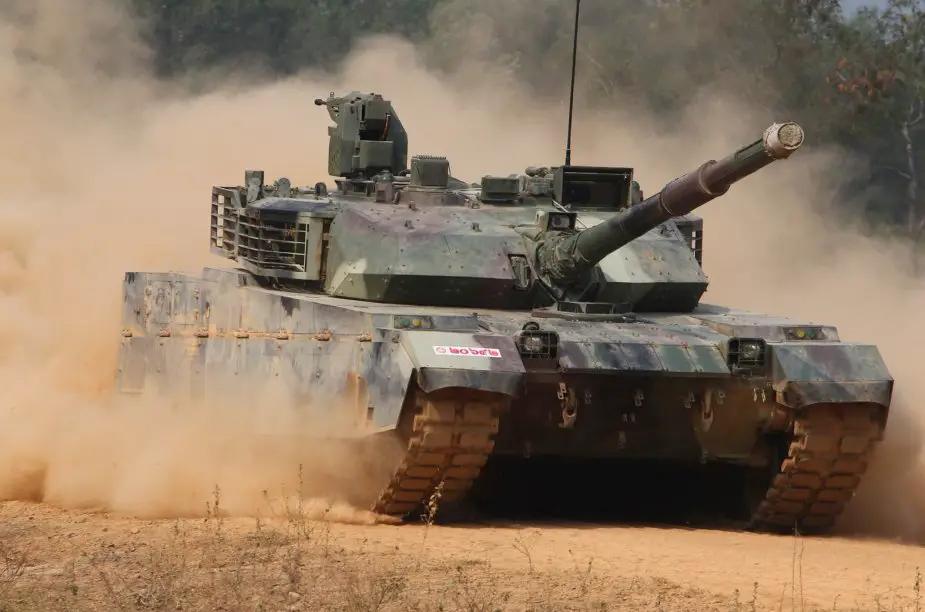Breaking news
Thailand gets 10 more VT-4 MBTS, 38 VN-1 APCs from China.
Thailand received 10 more VT-4 main battle tanks from China this week, an army official said on Thursday, Dec. 5, three months after Bangkok took delivery of Stryker M1117 infantry combat vehicles from the United States. Araya Poejar and Nontarat Phaicharoen report on BenarNews.

Royal Thai Army VT-4 MBT (Picture source: RTA Cavalry Center)
Ten VT-4 main battle tanks (or MBT-3000 in Chinese nomenclature) – the final lot of the total of about 50 units – and 38 VN-1 armored personnel carriers, among other military equipment, arrived on Tuesday, Dec.3, from China at a port in Chonburi province, southeast of Bangkok. All these vehicles were brought to the Adisorn Cavalry Center in Saraburi province for inspection. Thailand has not officially confirmed the arrival of its military acquisitions from Beijing, amid domestic criticism over its defense budget despite an economic slowdown.
Bangkok has allocated 233 billion baht (US$7.7 billion) for its security spending for fiscal year 2020, even though the growth rate for Southeast Asia’s second-biggest economy was forecasted by the International Monetary Fund to slow down to 3 percent next year. The United States froze $4.7 million of security-related aid and canceled security agreements with Thailand in 2014, when Prime Minister Prayuth Chan-o-cha, then the army chief, led a bloodless putsch that deposed Prime Minister Yingluck Shinawatra.
The latest delivery of battle tanks from Beijing was part of the 50 tanks and auxiliary vehicles ordered in 2016 by the Thai junta from NORINCO, China’s defense corporation, in a deal aimed at replacing M41 Walker Bulldog tanks of the Vietnam-war era. The deal was worth about 7 billion baht (US$231 million).
As part of its program called Foreign Military Financing, Washington also provides some countries with grants and loans that can be used to purchase defense equipment from U.S. manufacturers. Those grants are separate from arms sales in which the importing country would use its own money to acquire the weapons.
Thai Army chief Gen. Apirat Kongsompong told reporters in August that about 70 armored personnel carriers would arrive from the United States by the end of this year, with 50 more expected next year. The first batch of 10 arrived in September, local reports said. The U.S. State Department approved the sale of 60 Strykers in July, in a deal worth $175 million (5.4 billion baht), according to a Pentagon statement. The first Stryker M1117 delivered to the Royal Thai Army was displayed at the recent Defense & Security Thailand 2019 exhibition in Bangkok.
Paul Chambers, a lecturer and adviser for international affairs at Naresuan University, said Thailand was expected to even out its arms purchases from the United States and China, despite its early moves gravitating toward Beijing following the 2014 coup.
Thailand is no longer tilting toward China but, instead, is pivoting back toward the United States, defense expert Paul told BenarNews. “Nevertheless, I expect the Thai government will seek to balance off the United States and China in terms of foreign policy and arms purchases. In 2019, Thailand is specifically moving closer to the United States in terms of weapons purchases,” he said. “But expect China and the U.S. to both prosper in terms of selling weapons to Thailand.”
Back on Sept. 12, when he led a ceremony accepting the 10 infantry carrier vehicles from the U.S. Army Pacific commander, Gen. Apirat, the Thai army chief, did not directly answer questions from reporters on whether he would prefer U.S. or Chinese weapons. “Regardless of various sources of weapons, we stick to the American combat value we’ve adopted for 50 years,” he said. “We still use American doctrine we’ve learned”, Araya Poejar and Nontarat Phaicharoen report.

VN-1 APC (Picture source: Army Recognition)


























